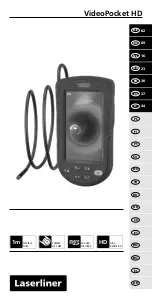
5
Mounting
5.1
Mounting instructions
•
Observe the technical data.
•
Protect the sensor from direct sunlight.
•
To prevent condensation, avoid exposing the sensor to rapid changes in tempera‐
ture.
•
The mounting site has to be designed for the weight of the device.
5.2
Preparation for mounting
5.2.1
Installation requirements
NOTICE
Radio interference may occur when the device is used in residential areas!
Only use the device in industrial environments (EN 61000-6-4).
•
Typical space requirement:
see "Field of view diagrams", page 23
and type-spe‐
cific dimensional drawing.
•
Comply with the technical data, such as the permitted ambient conditions for oper‐
ation of the device,
.
•
Ensure good dissipation of excess heat from the device to the surroundings, in
particular at higher ambient temperatures. Ensure that there is good heat transfer
from the device, for example via the bracket to the mounting base, or ensure that
the back of the device is a sufficient distance from the wall of a housing.
•
The device must be mounted using the tapped blind holes provided for this pur‐
pose, or using the sliding nuts.
•
Mount the device in a shock and vibration insulated manner.
•
Make sure the device has a clear view of the objects to be scanned.
Auxiliary equipment required
■
Mounting bracket with sufficient load-bearing capacity and suitable dimensions.
■
Two or four M5 screws for mounting on a mounting device supplied by the cus‐
tomer. The screw length depends on the mounting base (wall thickness of the
bracket). When using an optional SICK bracket, the screws for mounting are
included with delivery.
■
Tool and tape measure.
5.2.2
Mounting the device
The device is mounted using threaded mounting holes (M5) or sliding nuts.
The threaded mounting holes are located on the rear of the device.
The sliding nuts can each be inserted into a slot on the side of the housing.
SICK offers prefabricated brackets which are optimally suited for mounting the device
in a wide range of applications (
).
User-supplied brackets
A user-supplied bracket must meet the following requirements:
•
Alignment of the device in the x and y axes can be adjusted
•
The mounting device must be able to bear the weight of the device and connecting
cables free of vibrations
5
MOUNTING
22
O P E R A T I N G I N S T R U C T I O N S | InspectorP621
8024439//2019-06 | SICK
Subject to change without notice
















































